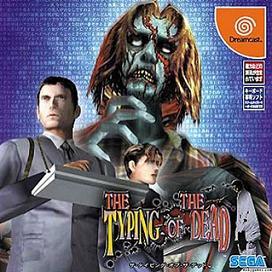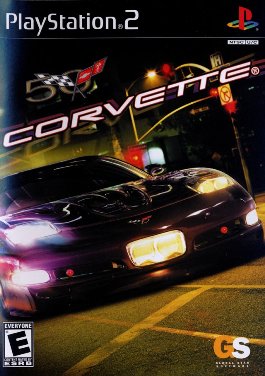
The Typing of the Dead is an arcade game that was developed by WOW Entertainment and published by Sega for the NAOMI hardware. The game was released in Japanese arcades in 1999 and was ported to the Sega Dreamcast in 2001 by Smilebit. A Microsoft Windows version was released in 2000 and a PlayStation 2 port followed in 2004.

Tekken Tag Tournament is the fourth installment in the Tekken fighting game series. Tekken Tag Tournament was released as an arcade game in 1999, before becoming a North American and European launch title for the PlayStation 2 in 2000. The arcade version ran on the same Namco System 12 board with a 32-bit engine as Tekken 3, while the ported home console version received upgraded graphics. A sequel, Tekken Tag Tournament 2, was released in 2011. A remastered version of the game titled Tekken Tag Tournament HD was released for the PlayStation 3 in November 2011, as part of Tekken Hybrid.

Time Crisis II is a 1997 light gun arcade video game developed and published by Namco. It is the second installment in the Time Crisis series. The game incorporates the same mechanics of its predecessor, with some minor changes, but with the addition of co-operative two-player gaming. The game's story focuses on the efforts of two secret agents, Keith Martin and Robert Baxter, as they attempt to thwart the efforts of a industry mogul's plan for world dominance.

Time Crisis 3 is a rail shooter, released for the arcade in 2002 (JP) and 2003 (NA), the third instalment of the Time Crisis series. Like its predecessor, Time Crisis II, it allows for two players to cooperate in a link play environment and has the Time Crisis signature pedal system for hiding and advancing and the first in the series to change or select weapons. It was later ported to the PlayStation 2.

Silent Scope is an arcade game created in 1999 by Konami. The game puts the player in the shoes of a sniper during a series of terrorist incidents. It is the first in the Silent Scope series.

Need for Speed: Underground is a 2003 racing video game and the seventh installment in the Need for Speed series. It was developed by EA Black Box and published by Electronic Arts. Three different versions of the game were produced: one for consoles and Microsoft Windows, and another for the Game Boy Advance. An arcade version was additionally developed by Global VR and was published by Konami with assistance from Electronic Arts.

Burnout 2: Point of Impact is a 2002 racing video game developed by Criterion Games and published by Acclaim Entertainment for PlayStation 2, GameCube and Xbox. It is the sequel to the 2001 video game Burnout and the second title in the Burnout series. It was the last Burnout game to be released on the GameCube and the series would not see a release on a Nintendo platform until the release of Burnout Legends in 2005. The game also marked Acclaim's last entry in the Burnout series, as Acclaim would go bankrupt in 2004; the rest of the series would be published by Electronic Arts.

Time Crisis is a first-person on-rails light gun shooter series of arcade video games by Namco, introduced in 1995. It is focused on the exploits of a fictional international intelligence agency who assigns its best agents to deal with a major threat by a hostile organisation, which has ranged from criminals, terrorists and hostile military outfits, and mostly take place within fictional locations across the world. The arcade series differed from other light gun shooters of its time by incorporating unique mechanics, including the ability to duck into cover to dodge attacks and reload the player's weapon, and forcing players to complete battles in each level within an allotted amount of time.

Time Crisis 4 is a rail shooter and the fourth installment in the main series. It was released as an arcade game in 2006, and was ported with the GunCon 3 light gun peripheral for PlayStation 3 in 2007. It features a new first-person shooter mode. It was later re-released as part of Time Crisis: Razing Storm with support for the PlayStation Move controller, without the first-person shooter mode.

SpyHunter is a vehicular combat game. It is a remake and sequel of the 1983 arcade game of the same name first released for PlayStation 2 in 2001. It has since been ported to GameCube, Xbox, Game Boy Advance, Microsoft Windows, OS X, and Tapwave Zodiac. In the game, the player drives the G-6155 Interceptor, an advanced, weaponized spy vehicle. Unlike the original's top-down view, the remake is played with a chase camera, similar to a racing game.

Maximum Force is a light gun shooter arcade game developed by Mesa Logic for Atari Games in 1997. In 1998, Atari Games re-released the game as part of one machine called Area 51/Maximum Force Duo that also included Area 51, and later ported the game to both the Sony PlayStation and Sega Saturn game consoles.

Top Gun: Combat Zones is a combat flight simulation game named after the 1986 film Top Gun. It was developed by British studio Digital Integration and published by Titus Interactive. It was originally released for the PlayStation 2 in 2001, followed by a GameCube version in 2002. Versions were also released for the Game Boy Advance and Microsoft Windows.
Mobile Suit Gundam: Federation vs. Zeon is a 2001 arcade video game based on the anime television series Mobile Suit Gundam. An upgraded compilation of the game, called Kidō Senshi Gundam: Renpō vs. Zeon & DX, includes 360-degree, zero-G space battlefields. Both versions were later ported to the Dreamcast and PlayStation 2 game consoles.

Corvette is a 2003 racing video game developed by Steel Monkeys' Glasgow and Minsk studios in which players race in cars from the 1950s and unlock cars in career mode to race cars from 1953 to 2003. Players can customize cars to fit their driving style. The game features traffic and policemen. The tracks come from Chicago and go to L.A. The game was released on Xbox, Game Boy Advance, Windows, and PlayStation 2.

Time Crisis: Razing Storm, known in Japan as Big 3 Gun Shooting, is a compilation of light gun rail shooter video games by Namco for the PlayStation 3. Featuring full compatibility with both the GunCon 3 light gun and the PlayStation Move motion control system, the compilation consists of ports of various arcade games. Developed by Nex Entertainment and published by Namco Bandai Games, the compilation was released in 2010 in North America on October 19, and in Japan on October 21, which is the launch date of the PlayStation Move in Japan. It was released as part of a bundle with the PlayStation Move, PlayStation Eye and the Shooting attachment for the PlayStation Move in Japan and other Asian countries.

Agassi Tennis Generation is a tennis sports game developed by Aqua Pacific and published by DreamCatcher Interactive for Microsoft Windows, PlayStation 2 and Game Boy Advance. The game features former tennis player Andre Agassi.

Stunt GP is a radio-controlled car racing video game developed by the UK-based studio Team17, released in 2001. It was published by Eon Digital Entertainment for Windows and Dreamcast, and by Titus Software for PlayStation 2. Stunt GP uses the RenderWare engine. It has both single-player and offline multiplayer game modes using the split-screen method, and various game controllers are supported.

Resident Evil Survivor 2 – Code: Veronica is a light gun shooter video game developed and published by Capcom as part of the Resident Evil series. The arcade version was developed in conjunction with Namco for the arcade machines. The game was released for Sega NAOMI and PlayStation 2. It was released on the PlayStation 2 on November 8, 2001 in Japan and in Europe on March 22, 2002. Whilst the Playstation 2 release is a light gun shooter, the NAOMI arcade release features no lightgun technology whatsoever, instead deferring control of each player entirely to a three-axis joystick in the shape of a gun. The game is the second instalment in the Gun Survivor series and the sequel to Resident Evil Survivor. The game is adapted from Resident Evil – Code: Veronica and features enemies and characters from that game, and enemies from Resident Evil 2 and 3. It was followed by Dino Stalker which is a spin-off of Dino Crisis, and has no ties to Resident Evil.

MotoGP 3 is a Grand Prix motorcycle racing video game developed and published by Namco for the PlayStation 2. Released in 2003, it is the third game in the Namco series, which coincided with the THQ series for a number of years.


















